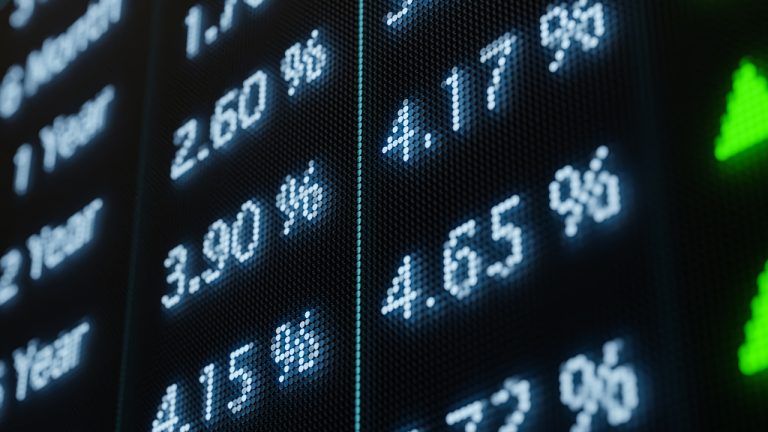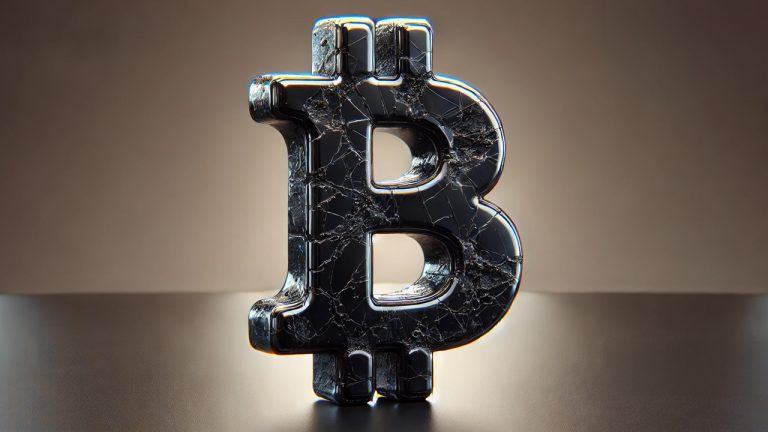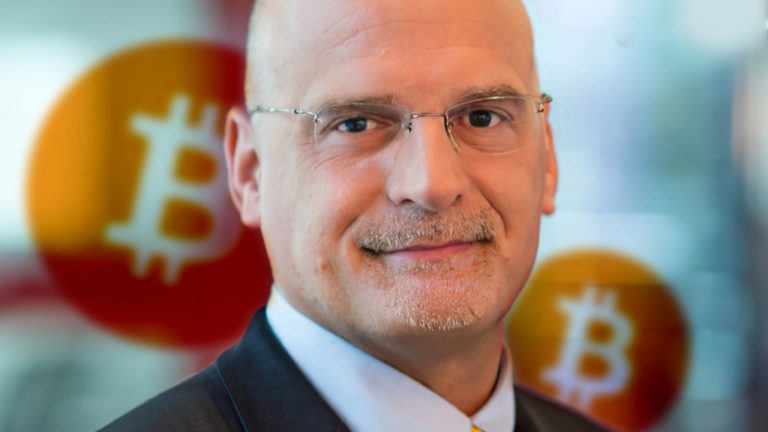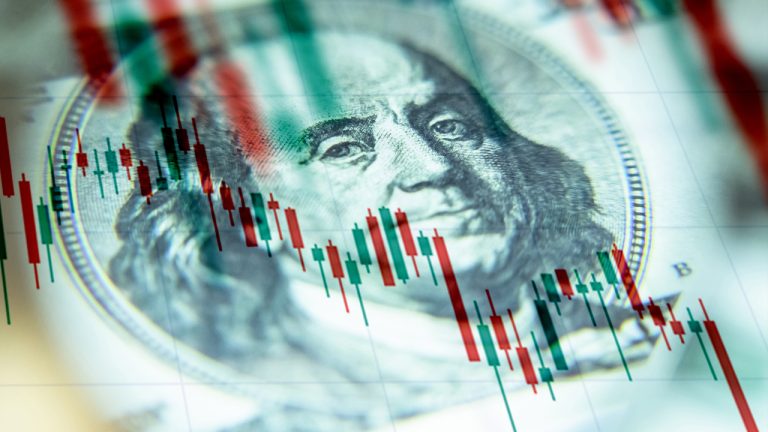 The U.S. Treasury yield curve is undergoing a notable bear steepening, a trend signaling rising economic jitters as the 2024 election nears, with the Federal Open Market Committee (FOMC) meeting close behind. Rising U.S. Treasury Yields Could Spell Trouble for 2025 Economy As the U.S. approaches the 2024 election, economic indicators are signaling turbulence ahead, […]
The U.S. Treasury yield curve is undergoing a notable bear steepening, a trend signaling rising economic jitters as the 2024 election nears, with the Federal Open Market Committee (FOMC) meeting close behind. Rising U.S. Treasury Yields Could Spell Trouble for 2025 Economy As the U.S. approaches the 2024 election, economic indicators are signaling turbulence ahead, […] According to QCP Capital’s latest analysis, macroeconomic conditions are becoming increasingly favorable for risk assets, including cryptocurrencies. Central bank policies, particularly from China and the U.S. are playing a crucial role in shaping market sentiment. QCP Capital: Central Bank Moves Boost Outlook for Crypto QCP Capital‘s analysis on Wednesday highlights a series of macroeconomic developments […]
According to QCP Capital’s latest analysis, macroeconomic conditions are becoming increasingly favorable for risk assets, including cryptocurrencies. Central bank policies, particularly from China and the U.S. are playing a crucial role in shaping market sentiment. QCP Capital: Central Bank Moves Boost Outlook for Crypto QCP Capital‘s analysis on Wednesday highlights a series of macroeconomic developments […] Equities kicked off Friday on a quiet note, with little movement as the latest U.S. labor market report unveiled a softer-than-anticipated addition of 142,000 jobs for August. The data only adds to growing recession concerns, layering on top of several earlier signs hinting at an economic slowdown. Meanwhile, the 10-2 year Treasury yield spread has […]
Equities kicked off Friday on a quiet note, with little movement as the latest U.S. labor market report unveiled a softer-than-anticipated addition of 142,000 jobs for August. The data only adds to growing recession concerns, layering on top of several earlier signs hinting at an economic slowdown. Meanwhile, the 10-2 year Treasury yield spread has […] Based on the latest data, the yield curve of the U.S. Treasury, which charts the yields for two-year and ten-year bonds, has remained inverted for a total of 656 days. This latest inversion joins previous records set in 1929, 1974, and 2008, all of which preceded substantial declines in the stock market. Recently, market observers […]
Based on the latest data, the yield curve of the U.S. Treasury, which charts the yields for two-year and ten-year bonds, has remained inverted for a total of 656 days. This latest inversion joins previous records set in 1929, 1974, and 2008, all of which preceded substantial declines in the stock market. Recently, market observers […]
Unfavorable crypto regulations in the United States, Europe and the United Kingdom was one of the factors for Yield Protocol’s untimely shutdown.
Decentralized finance (DeFi) lending protocol Yield Protocol announced its decision to shut down by the end of the year due to a lack of business demand and global regulatory pressures.
Yield Protocol will cease to exist after its December 2023 series ends, which is slated to mature on December 29, 2023. In its announcement detailing the “wind down” operation, Yield Protocol confirmed that the March 2024 fixed rate series launch had been canceled. The protocol stated:
“While we think that the future is bright for DeFi and fixed rate markets in DeFi, we felt this decision was necessary because there is currently not sustainable demand for fixed-rate borrowing on Yield Protocol.”
Unfavorable crypto regulations in the United States, Europe and the United Kingdom were also among the reasons that ultimately led Yield Protocol to shut down. Starting today, “liquidity providers for the *MS (March-September) strategies won’t accrue any further fees,” it stated.
We’ve made the tough decision to wind down the Yield Protocol. The March 2024 fixed rate series will not be launched. Only the December 2023 series remains active for borrowing and lending. All borrowing and lending will end by December 31st. https://t.co/oHnCGgeP13
— Yield Protocol (@yield) October 3, 2023
Finally, “all borrowing and lending will end by December 31st,” two days after the existing series will mature, an official tweet confirmed.
Related: Binance to shut down BUSD lending by October 25
2023 witnessed numerous other protocol shutdowns, which included the $29 million in total value locked lending platform Geist Finance and a Discord crypto trading bot None Trading valued at $16.5 million.
In both cases, the primary reason for their shutdown was attributed to an external attack. Geist Finance shut down permanently due to losses from a Multichain exploit. None Trading said it had “lost a significant amount of funding” and “team tokens” crucial for its operations.

Binance jumped in with a $5 million Curve token investment to help with efforts to minimize the risk of contagion.
Welcome to Finance Redefined, your weekly dose of essential decentralized finance (DeFi) insights — a newsletter crafted to bring you the most significant developments from the past week.
The DeFi ecosystem is yet to recover from the crisis brought on by the Curve Finance hack, and even though the issue seems contained, another set of exploits hit the DeFi ecosystem this past week.
DeFi protocol Steadefi is the latest victim of an ongoing exploit as the ecosystem was still recovering from the Curve crisis.
Binance came forward to invest $5 million in the Curve token as the hacker partially returned the funds to manage the risk associated with the Curve token price.
In other news, Aptos has partnered with Microsoft to collaborate on multiple Web3 solutions, helping its token soar in double digits. Coinbase became the first publicly listed company to launch a decentralized layer-2 platform called Base, which has already attracted significant interest from the DeFi community.
Binance Labs, the venture arm of cryptocurrency exchange Binance, has invested $5 million in Curve Finance (CRV), the namesake token of the decentralized stablecoin trading platform.
“Curve is the largest stableswap and second-largest DEX [decentralized exchange], with approximately $2.4 billion in total value locked and $215 million in daily volume at the time of writing,” Binance Labs said in the Aug. 10 announcement. Yi He, Binance’s co-founder and head of Binance Labs, said the firm is pledging its full support to the DEX “given recent events that have impacted the protocol.”
Aptos (APT), the cryptocurrency powering the layer-1 Aptos Network, is up approximately 11.6% since announcing it will leverage Microsoft’s suite of artificial intelligence tools to advance Web3 adoption among banks and financial enterprises.
This will be achieved by enabling the Aptos Network to tap into Microsoft’s Azure OpenAI service to explore innovations in asset tokenization, on-chain payments and central bank digital currencies, Aptos said in an Aug. 9 statement.
Coinbase’s Base network has officially launched after spending a few weeks in an “open for builders only” phase. The network is now ready to onboard users, according to an Aug. 9 announcement from the team.
Several Web3 development teams have simultaneously announced that they are releasing apps for Base, and the network’s team has released a schedule of upcoming events to celebrate its launch.
DeFi app Steadefi was exploited for at least $334,000 on Aug. 7 in an ongoing attack. The app’s development team said in a social media post that the attack currently “puts all funds at risk.” The app’s total value locked has plummeted due to the attack, according to data from DefiLlama.
The Steadefi team posted a message to X (formerly Twitter) stating: “NOTICE: Steadefi has been exploited and all funds are currently at risk.” The team also confirmed that an on-chain message had been sent to address 0x9cf71F2ff126B9743319B60d2D873F0E508810dc on Ethereum in an attempt to negotiate with the attacker. Blockchain data reveals several large inflows on the Avalanche chain came into this address, beginning at 4:41 pm UTC on Aug. 7.
DeFi’s total market value saw a bearish decline in the past week. Data from Cointelegraph Markets Pro and TradingView shows that DeFi’s top 100 tokens by market capitalization had a mixed week, with most tokens trading in the red. The total value locked into DeFi protocols remained below $50 billion.

Thanks for reading our summary of this week’s most impactful DeFi developments. Join us next Friday for more stories, insights and education regarding this dynamically advancing space.

The Bitcoin futures' premium surge is having traders ask whether this is excitement or a return to the average after a multi-month bear market.
The Bitcoin (BTC) futures' premium has reached its highest level in 18 months on July 4. But traders are now questioning whether the derivatives metrics indicate "excessive excitement" or a "return to the mean" after a prolonged bear market.
Bitcoin's price has been trading in a narrow 4.4% range since June 22, oscillating between $29,900 and $31,160 as measured by its daily closing prices. The lack of a clear trend might be uncomfortable to some, but that is a reflection of the opposing drivers currently in play.
For instance, investor sentiment was negatively affected by the historic reversion of the U.S. Treasury yield curve, which reached its highest level on record.

The closely monitored inverted spread between the 2-year and 10-year Treasury notes has reached its highest level since 1981, standing at 1.09%. The phenomenon known as yield curve inversion, when shorter-dated Treasury notes trade at higher yields than longer-dated notes, typically precedes economic recessions.
Related: Fed pauses interest rates, but Bitcoin options data still points to BTC price downside
On the other hand, signs of strength in the U.S. economy have reportedly driven investors to price in the possibility of further interest rate increases by the central bank to keep inflation under control.
In addition to these macroeconomic distortions, cryptocurrency regulation has also been at the center of investors’ attention as of late. Here are just some recent examples:
So investors are probably now asking: Does Bitcoin have the strength to break above the $31,000 resistance? Of course, one must take a potential economic recession and the increasing regulatory clampdown measures around the world into account first.
Luckily, Bitcoin futures' contract premiums can provide some clues for traders about the market's next move for reasons discussed below — as well as the costs of hedging using BTC options.
Bitcoin quarterly futures are popular among whales and arbitrage desks. However, these fixed-month contracts typically trade at a slight premium to spot markets, indicating that sellers are asking for more money to delay settlement.
As a result, BTC futures contracts in healthy markets should trade at a 5% to 10% annualized premium — a situation known as contango, which is not unique to crypto markets.

The demand for leveraged BTC longs has significantly increased over the past week as the futures contract premium jumped to 6.4% on July 3 from 3.2% one week prior. Besides reaching the highest level in 18 months, the metric has finally moved to a neutral-to-bullish area.
Related: Here’s what happened in crypto today
To gaugue market sentiment further, it's also helpful to look at the options markets as the 25% delta skew can assess whether the price stagnation has made investors less optimistic. It reveals when arbitrage desks and market makers charge higher prices for protection against upside or downside movements.
In short, if traders expect a drop in Bitcoin's price, the skew metric will rise above 7%, while periods of excitement typically have a negative 7% skew.

The 25% delta skew metric experienced a complete turnaround, indicating bullish momentum picked up on June 21 when it dropped below -7%. As Bitcoin's price climbed back above $30,000, the indicator continued to improve, culminating in "greed" with a negative 13% skew on July 2.
Typically, a 6.4% futures basis and a negative 13% delta skew would be considered moderately bullish. However, considering analysts' estimating a 50% chance for BlackRock's spot Bitcoin approval, these metrics might be seen as conservative. But a certain amount of skepticism is indeed healthy for buyers using derivatives contracts and avoids the risk of cascading liquidations.
Related: Bitcoin ETF race begins: Has institutional trust returned to crypto?
Currently, macroeconomic factors and regulatory uncertainty likely explain the suppressed optimism for BTC derivatives despite multiple ETF requests from the world's largest asset managers.
So 18-month highs aside, the current Bitcoin futures' premium remains relatively modest, compared to previous instances of excessive optimism such as the 19% in October 2021.
Thus, today's 6.3% futures premium represents a healthy market as opposed to 10% or higher indicating excessive optimism or euphoria. Moreover, traders should remain confident given that bulls have room to further leverage long positions without running excessive risk.
This article does not contain investment advice or recommendations. Every investment and trading move involves risk, and readers should conduct their own research when making a decision.
 This week, Bloomberg Intelligence senior macro strategist Mike McGlone shared his March outlook and noted that the “top catalyst” that could push gold above the $2,000-per-ounce range is a recession. McGlone further explained in an update about bitcoin and the Nasdaq that a key ingredient to force the U.S. Federal Reserve to pivot its stance […]
This week, Bloomberg Intelligence senior macro strategist Mike McGlone shared his March outlook and noted that the “top catalyst” that could push gold above the $2,000-per-ounce range is a recession. McGlone further explained in an update about bitcoin and the Nasdaq that a key ingredient to force the U.S. Federal Reserve to pivot its stance […] Yields on long-dated U.S. Treasuries have been erratic this year and this week, the 10-year Treasury yield crossed 3.5% for the first time in a decade. Following the Fed’s 75bps (basis points) rate hike, 10-year notes reached 3.642% and two-year Treasury notes jumped to a 15-year high at 4.090%. The curve between the two- and […]
Yields on long-dated U.S. Treasuries have been erratic this year and this week, the 10-year Treasury yield crossed 3.5% for the first time in a decade. Following the Fed’s 75bps (basis points) rate hike, 10-year notes reached 3.642% and two-year Treasury notes jumped to a 15-year high at 4.090%. The curve between the two- and […]
Infinity Exchange CEO Kevin Lepsoe says if DeFi wants more institutional adoption in crypto, it must first nail the fixed income markets.
The decentralized finance (DeFi) ecosystem scored another win against traditional finance, often called TradFi, with a former Morgan Stanley executive launching a DeFi protocol.
Kevin Lepsoe, the former head of structuring for Morgan Stanley, aims to deliver an institutional fixed income scheme that offers fixed and floating rates with his new project named Infinity Exchange.
According to Lepsoe, his new project will allow DeFi traders to “implement arbitrage, pull liquidity from other protocols and hedge their futures rates basis risk positions.”
The DeFi market is known for its volatility and, therefore, risk in digital asset trades. Trading with more options enables one to hedge risk and speculate along the entire span of a maturity curve. With more investable asset options available to trade along the said curve, users can move from risky and riskless assets more easily.
Lepsoe told Cointelegraph that introducing a crypto yield curve is important to the growth of DeFi trading because it lowers volatility.
“If there was a crypto yield curve, a more robust suite of products around stablecoins and a way to unify both TradFi and DeFi rates, crypto volatility would be markedly lower.”
This development sets the stage for institutional traders and investors to continue pouring into the space. According to a recent survey from Bitstamp, institutional interest is still high. 80% of polled institutional investors believe that crypto will overtake traditional investment forms in the next decade.
Related: Where today’s DEXs are falling short, explained
Lepsoe reiterated if the space wants more institutional investors to feel safer in the market, applying mechanics that already work within known markets is a place to start. "In TradFi, institutional investors are more active in the fixed income markets than they are in the equity markets," Lepsoe said.
The CEO highlighted that institutional adoption will follow if fixed income markets are a thing of the future for DeFi.